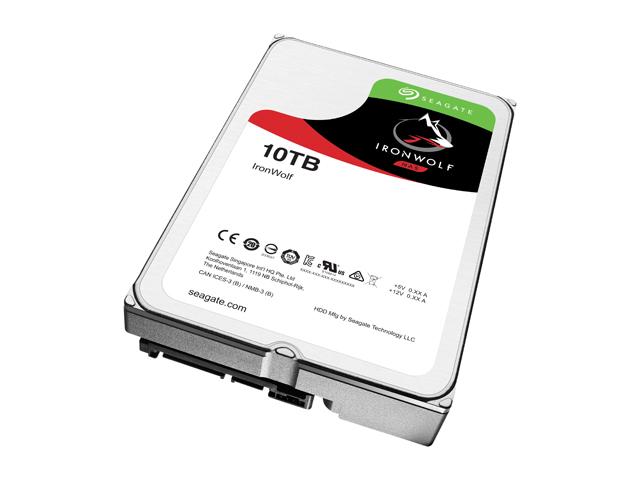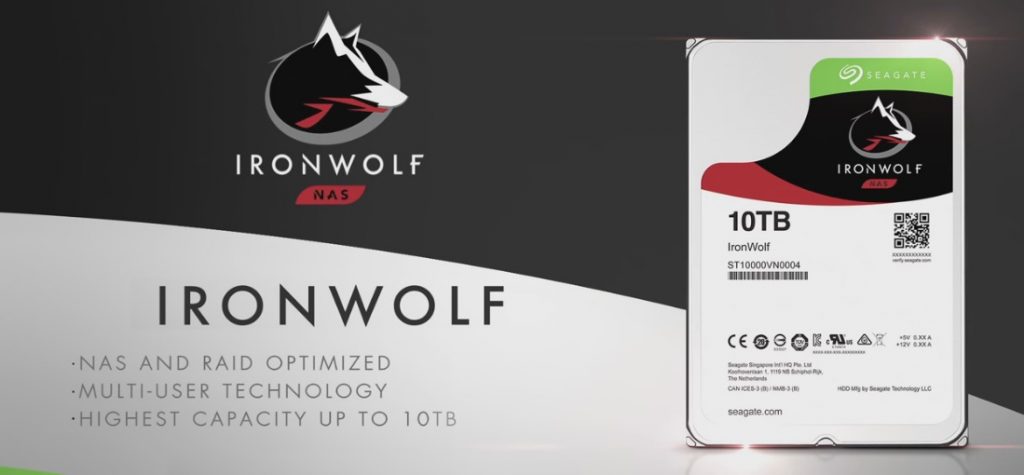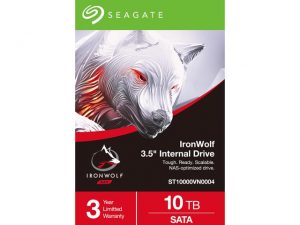
This article is brought to you by Seagate’s new 10 TB IronWolf NAS drive, available now on Newegg.
Storage solutions are constantly evolving to fit our needs, and when you find yourself sorting through your files trying to decide what to keep and what to backup on yet another external hard drive, it’s time to start looking at a NAS system to make sure your data is safe, secure, and to save you a heck of a lot of time waiting on your USB 3.0 port to transfer terabytes of data at a snail’s pace.
Let’s take a look at what NAS actually is, and look at some of the reasons to make the jump to a Network Attached Storage solution.
What is a NAS system?

At its very core a NAS system can be a very simple, very small PC with a focus on transmitting files back and forth over a network connection. You slot in your choice of NAS hard drives, or make use of those provided with the enclosure, and link it up to your router via an ethernet cable. Once connected the NAS allows you to freely upload or download files from almost any device on the network at the maximum possible speed your router can handle. A NAS system creates a specialized location on your network that serves as a massive personal data dump without any of the complications or limitations that might come around if you were to max out the number of hard drives you can fit in your rig.
It’s important to note that a Network Attached Storage system is so much more than just a hard drive plugged into a router; it’s versatile, safer than almost any other storage solution on the market, and allows you to cater your storage capacity to perfectly fit your needs whether it’s a 5TB movie library, or a massive 10TB storage beast fit for keeping hundreds of backups and high quality media files.
Store safely, with RAID

When it comes down to the brass tacks, RAID functionality is one of the most attractive features of any NAS solution. One of the worst parts about living and breathing in the computerized world is when something fails and hundreds of hours of work are lost due to mechanical failure. It’s a harsh truth that someday a hard drive is going to fail, a flash drive is going to break, and even if you recover some of the data stored within, some portion of it could be gone forever.
Aligning your hard drives in a RAID configuration gives you a level of protection from that mechanical failure and guarantees that your backups or your files at large are safe and secure within your NAS. Servers and most large companies use RAID to keep their files and data perfectly preserved, but it’s important to note that there are several levels of RAID functionality, each with their own level of protection based off of whether you’re interested in maximizing file transfer speed, hard drive capacity, or data security.
Generally you’ll want to configure your NAS to run using RAID 5, which spreads a small amount of parity data across three or more separate drives. If a single drive fails this data can be used to seamlessly rebuild the data on the failed drive without slowing down or forcing the NAS to shut down. It’s one of the most popular systems in use today and is by far one of the best options to make sure your data is safe and secure even from mechanical failure. With the system you’ll lose a small percentage of the storage capacity on each drive, but the safety and peace of mind is the kind of thing to lull even the most paranoid tech enthusiast to sleep at night.
Media across all platforms
Aside from keeping your data safe and secure, one of the inherent bonuses of attaching your storage to your network rather than simply keeping it sealed within the depths of your PC case is that a multitude of devices can take advantage of the files and data within the NAS while your main rig stays secure and hidden from prying eyes.
This functionality not only gives you the freedom to upload or download files and media from every computer on your network, but a number of devices like high end Blu-Ray players, your gaming console of choice, smart phones, and even Smart-TVs can often access and take advantage of media files stored on your NAS. Your favorite movies, music, and pictures can often stream directly from the NAS to your other devices, bringing your entire media library to any compatible devices over your wireless network. It’s a simple solution that does wonders to make your life easier while also increasing the feeling that your home is being supported by a solid interconnected network, rather than a system of individual free-standing devices that happen to share the same internet connection.
A safe place to backup literally everything

Because a NAS can be configured with RAID it makes it the perfect solution to safely backup and store a massive amount of data. Combine that with the fact that you can upgrade a NAS to near unheard of levels of storage capacity and it becomes the perfect solution for all of your storage needs without all the hassle of broken cords, slow ports, and missing external drives.
With a 10TB NAS at your fingertips you can store thousands of hours of gameplay footage, millions of high resolution photos, hundreds of OS backups, and even clone your drive on occasion to make sure that all of your settings, applications, and files are preserved. With the proper forethought and the right NAS you can even set your devices to automatically backup their data to the NAS every night.
Modular for the future
Thanks to its modular nature NAS is a future-proof storage investment. Because the system as a whole is only limited in capacity by the number of HDD bays it holds it’s easy to upgrade the HDDs as storage solutions continue to fluctuate in price and capacity. As the price per terabyte continues to go down you’ll be able to continuously swap out older, lower, capacity drives for faster, larger alternatives, and the system can continuously grow to fit your storage needs. Unless you suffer irreparable failure on the part of the enclosure itself, your NAS will deliver top-of-the-line performance for years to come.
Access your files whenever and wherever you need them
A favorite selling point of most NAS options on the market is the ability to access your files from them on a personal cloud, no matter the time or your location. Some options on the market have this functionality built in, and others might require the additional help of a quality FTP service such as FileZilla, but the end result is the same. Set up a rudimentary port forwarding service on your router along with a set of login credentials and you’ll be able to access the files on your NAS from anywhere in the world, without all the limitations concerning capacity, security, and server load inherent with other cloud services on the market.
Accessing files via the cloud you won’t see the same speeds you see on your home network because of internet bandwith issues, but it’s a heck of a nice feature.
With incredible capacity, versatility, and power use options, a NAS drive like the 10TB IronWolf just might be the tech you need to revolutionize the way you store your digital life.
Check out the IronWolf, SkyHawk, and BarraCuda drives from Seagate on Newegg.
